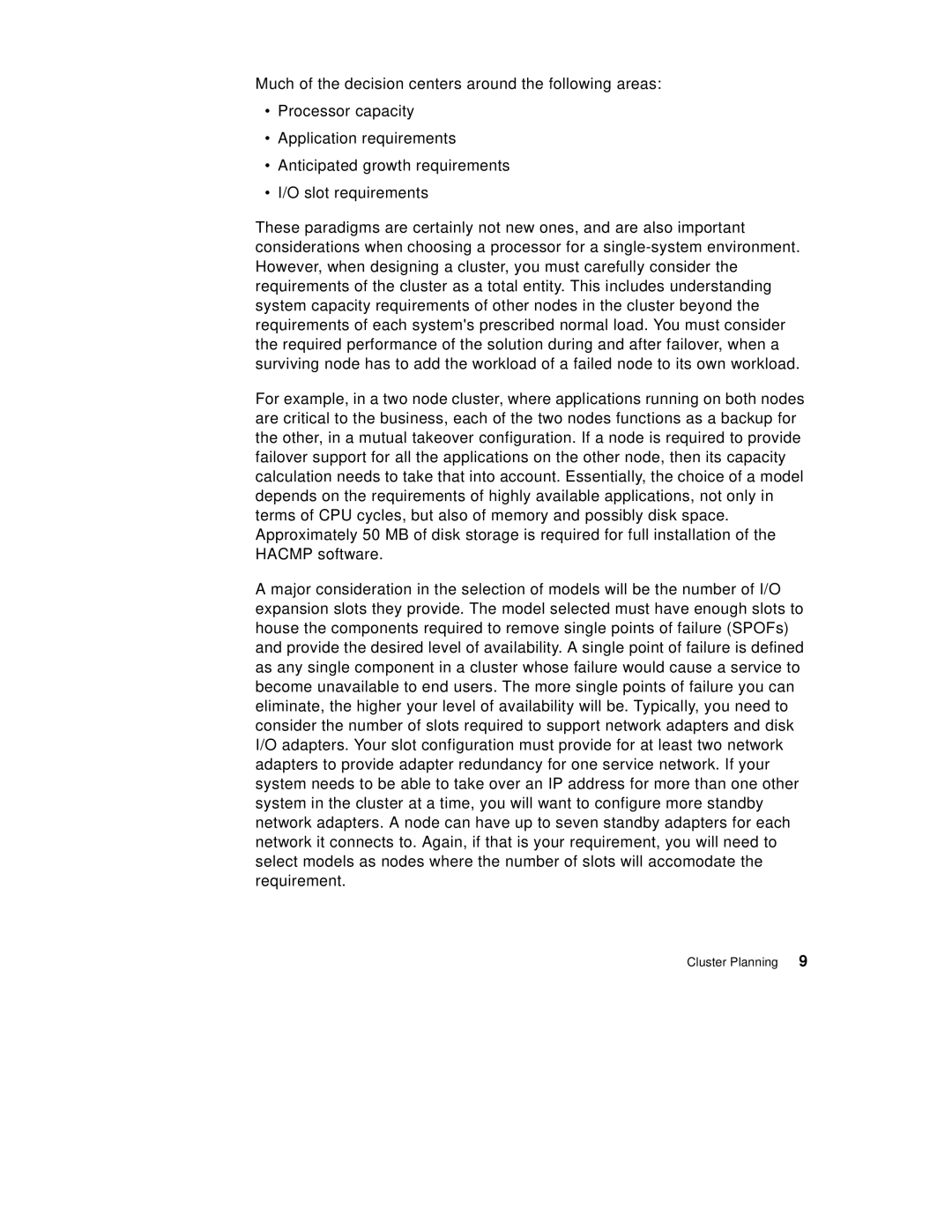Much of the decision centers around the following areas:
•Processor capacity
•Application requirements
•Anticipated growth requirements
•I/O slot requirements
These paradigms are certainly not new ones, and are also important considerations when choosing a processor for a
For example, in a two node cluster, where applications running on both nodes are critical to the business, each of the two nodes functions as a backup for the other, in a mutual takeover configuration. If a node is required to provide failover support for all the applications on the other node, then its capacity calculation needs to take that into account. Essentially, the choice of a model depends on the requirements of highly available applications, not only in terms of CPU cycles, but also of memory and possibly disk space. Approximately 50 MB of disk storage is required for full installation of the HACMP software.
A major consideration in the selection of models will be the number of I/O expansion slots they provide. The model selected must have enough slots to house the components required to remove single points of failure (SPOFs) and provide the desired level of availability. A single point of failure is defined as any single component in a cluster whose failure would cause a service to become unavailable to end users. The more single points of failure you can eliminate, the higher your level of availability will be. Typically, you need to consider the number of slots required to support network adapters and disk I/O adapters. Your slot configuration must provide for at least two network adapters to provide adapter redundancy for one service network. If your system needs to be able to take over an IP address for more than one other system in the cluster at a time, you will want to configure more standby network adapters. A node can have up to seven standby adapters for each network it connects to. Again, if that is your requirement, you will need to select models as nodes where the number of slots will accomodate the requirement.
Cluster Planning | 9 |
